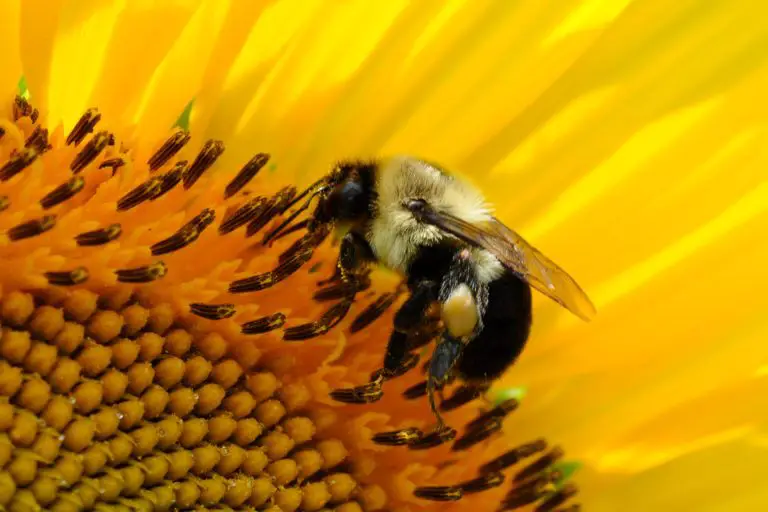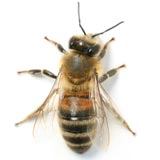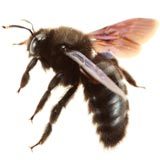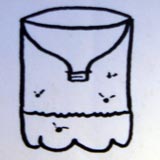
Stop! Before you do anything about removing bees or removing bee hives, you should first attempt to contact a local beekeeper. They’re good folk, and may solve your problem easy as pie…and they’ll be glad to help. And besides, bees aren’t the bad guys — we’d rather not see you kill them.
There is a good chance they will get rid of your bees for free. Why? Because in the last few years honey bee and other pollinator populations have declined significantly in recent years. There is always some bee die-off each year, but in recent years that rate of die-off has been 3x to 5x the norm. That kind of decline is unsustainable, and there are many people who would gladly take the bees off your hands rather than see you take drastic measures with them.
It bears repeating: Killing bees is not the preferred solution. Relocation is always better.
Before resorting to bee killer, steps should be taken to remove and relocate the bees peacefully, without chemicals. Ask around your local co-op; someone is bound to know a beekeeper.
Bee Articles
Bees really are amazing creatures. They communicate by dancing, and by dancing, bees can actually pinpoint food sources for other bees. I mean, if we’re going to talk about the miracles of evolution, bees are certainly one of them. Of course, bees can also be a nuisance, especially when they start making their home near yours. I understand why getting rid of bees might be a priority for you right now. The most common places to find bees would be under eaves and awnings, porches, and in the voids of walls–a particularly annoying place for a queen bee to choose as a hive. Just this summer I got my first sting from a bee where the colony had made its hive just under the first step of my mother’s second-story porch. It was painful, but I wouldn’t say I hold it against the poor thing. It did leave part of its ass (attached to the stinger) hanging from my ear and died what I imagine was a very painful death–without part of its body intact. So, if you want to avoid getting stung when you wander outside, here is how to get rid of bees.
Identifying Bees

Honey Bee
This is a honey bee. Honeybees are excellent pollinators, and we need honey bees in our world. They are the type of bee that only stings if protecting itself, and it can only sting once.

Bumble Bee
This is a bumble bee. Bumblebees are also great pollinators. They are the large bees that seem to fly around slowly, but surely. They rarely sting.

Carpenter Bee
This is a carpenter bee. Carpenter bees like to live in wood, like old rotten fences. They actually don’t hurt humans, but they also aren’t much of a pollinator.
Best Ways to to Get Rid of Bees
Identify
If you want to get rid of bees, you should try to figure out if it’s even a bee. A wasp looks more sleek than a bee; they’re like the jet-fighters of the insect world. Wasps and their close cousin, yellowjackets, can sting and the stings hurt. These are the ones that often come out in the fall, and like to go straight for your sugary food or drink.
Bees are less imposing, less harmful, and actually quite important to our environment. If the pest in question doesn’t look anything like this bee, then it’s probably a wasp, and you’ll want to go to the article about getting rid of wasps, yellow jackets, or hornets. If it looks like a bee, then you should proceed to the next step. We don’t mind you trying to kill wasps.
Find Hive
If you have determined that you are dealing with bees, it is time to find their home. In order to get rid of bees, you’ll have to find their hive. Because bees are diurnal (day dwelling) insects, it’s easier to find their hives at the beginning of dusk when the sun starts to set, or late dawn when the sun starts to rise. This is when you’ll notice the shimmer of wings in the twilight moving toward one particular area. Often times you’ll see a whole cloud of them surrounding a hive as they make their way indoors or outdoors.
Kill Bees
If you want to get rid of bees, the preferred choice is to relocate bees. This can only safely be done by a beekeeper, though. You do not want to get stung by 500 bees because you didn’t have the right gear.
But perhaps you have decided that these particular bees need to be eliminated. Spraying Raid into the hive is your best bet (here is a product made specifically for bees and wasps, on Amazon). This should be done in the evening, or in the dark, whichever is your preference. Dressing up in long pants and shirt with elastic bands with thick socks and gloves would be a good idea if you don’t want to risk being stung. I would recommend a face mask if you’re paranoid, but you may want to spare your neighbors the confusion of seeing a thief armed with an aerosol can in your backyard.
BE SURE TO CHECK YOUR STATE LAWS. Due to the recent colony collapse disorder, they may have made it illegal to spray bees with insecticides. We cannot write about every state law here — you need to check for yourself.
To make sure you really do get rid of the bees, spray the hive once more during the following evening. You should probably keep your eyes on the hive during dusk or dawn to see whether or not there is any traffic going to or from the beehive. If you don’t see any bees, then chances are you did the job right. If you do see bees, do what I told you and spray the beehive one more time. Check the following morning to make sure you got rid of the bees for good. BE SURE TO CHECK YOUR STATE LAWS. Due to the recent colony collapse disorder, they may have made it illegal to spray bees with insecticides.
Remove Hive
Once you’re certain the bees are dead, it’s time to get rid of the beehive. You don’t want this hive to be reclaimed by different bees later in the season. To be certain you avoid the risk of being stung, dress yourself in your silly-looking sweats again—sweats work well because the thickness provides a buffer between your skin and their stinger—and go knock that hive down. If it’s a hive in the ground, make sure to fill the hole you found it in. If it’s a hive in your siding, you may have to call a professional to have it removed. Otherwise, you can read the article about getting rid of a beehive that Peder wrote.
Pesticides and Bee Killer
Almost every time I or others have had to get rid of bees, it was done with Raid. Certainly, Raid is not a good thing to be spraying around the house, but I trust Raid as a brand-name pesticide and bee-control poison.
There are other ways to get rid of bees; for instance, boric acid (otherwise known as borax, often sold as a fine powder) is a slow but certain remedy for killing bees that have made a hive in your siding. The reason for using borax dust is because sprays may not reach the hive if they’ve built the hive far enough into the wall. Borax works with bees much the same way it works with ants. The bees get the dust on themselves, and they bring it back into the hive with them, eventually poisoning the entire colony. Other pesticide dusts can be found under the names Sevin and Apicide. Other bee-killing pesticide sprays are MicroCare and Baygon.
Many of the solutions for bees and wasps also work well on aphids, which can be an added bonus.
Best Natural Bee Control Methods

Bee Trap
A Bee Trap, fashioned from a 2 liter bottle of soda, is a safe and natural way to get rid of straggling bees. It won’t solve your bee problem if you have a hive, however. Bee traps are meant to reduce the number of bees in your yard, not to kill all of the bees in the area. Simply cut the conical part of the bottle off, turn it on its end to create a funnel and staple it into place. Then, fill the bottle with a few inches of juice or soda and hang the bottle in your yard. A majority of the bees will find their way in, but they won’t find their way out.
Borax
Borax is a perfectly natural solution to a bee problem. If you can find a way to get the powder into the beehive, it should take care of your bee problem in a matter of days. Borax, or boric acid, is a natural mineral that is mined, refined, and then sold as a powder and is most often referred to as borax. It can be used to kill any number of pests, so long as those pests make contact with the powder. You can find a 25lb tub of Borid at Amazon.
Manage Flowering Plants
It is no secret that bees love flowering plants. Anything that blooms is fair game for bees in the height of the season. If you don’t want bees nearby, then move flowers and flowering trees and plants away from your living area. If your yard is big enough, move anything that flowers to the back of your yard, well away from your house. Control dandelions and other flowering ground cover.
While there is a big movement right now to create bee-friendly yards, we understand if, for example, you have a bee allergy in the family and need to keep bees away from your living space.
Still, though...
With colony collapse disorder still a huge problem, please contact some local bee keepers or see if your local exterminator can hook you up with one. It’s better to save a colony than to kill it off. We discourage anyone from killing bees, but realize that there might be times when it is the only realistic solution. Still, it should be only done in a small minority of situations.
Bee Stings
What should you do if you’re stung by a bee?
- Some people are allergic to bees — and a bee sting can kill them. Even though this is only a small minority of people, take the precautions that your medical provider suggests if you are known to be allergic to bee stings.
- Wipe away the stinger and the poison sac in a sideways motion to ensure that you don’t drive the stinger deeper into the skin.
- Put ice on the sting immediately to curb any swelling that might occur, and take a pain reliever to help with the pain–the pain of a sting usually dissipates after 30 minutes.
- If you have swelling and itching, an antihistamine lotion like calamine should help.
- If you start to notice shortness of breath, heart palpitations, or you have had severe allergic reactions to other kinds of insect bites, you should seek medical attention immediately. Call 911 if needed. Having what doctors call an “EpiPen” in the house is a common recommendation for people who have severe allergic reactions to bee stings.